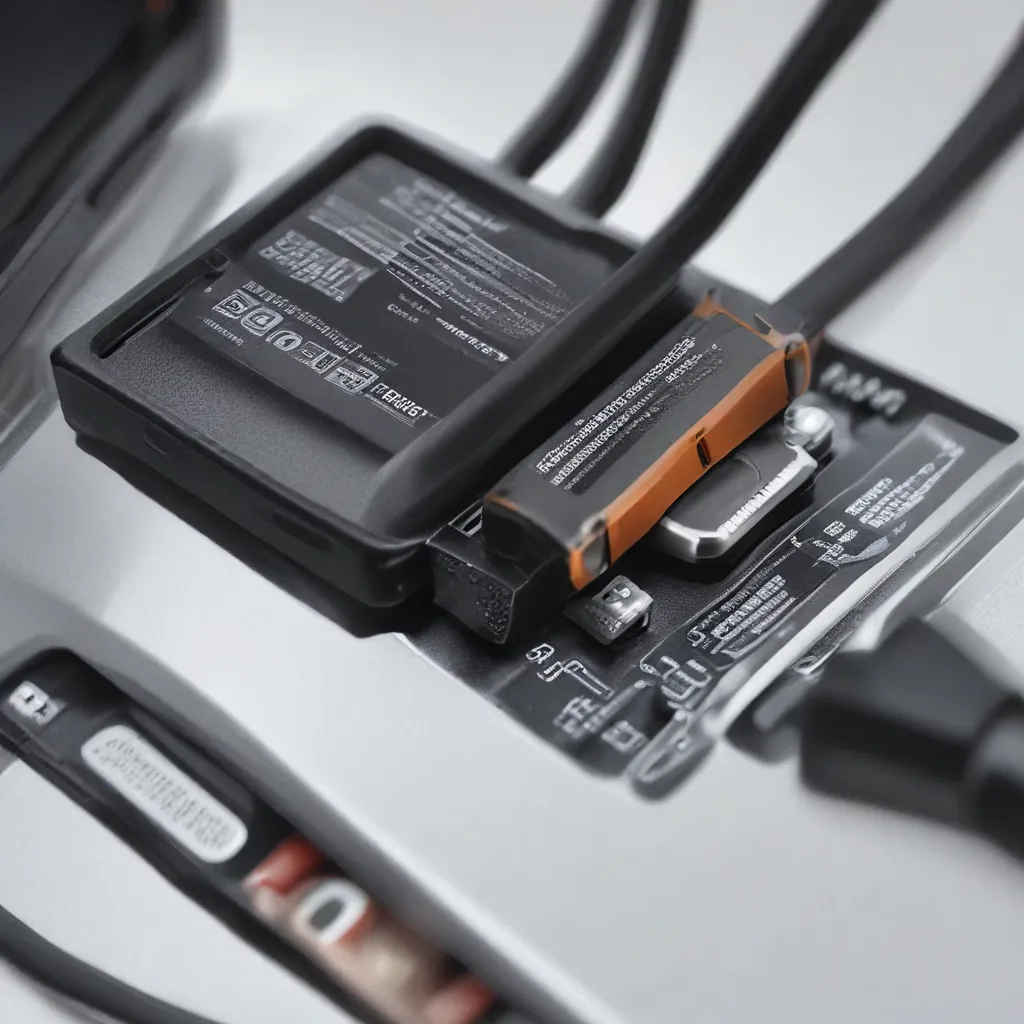As a self-proclaimed tech enthusiast, I’ve had my fair share of laptop charging woes over the years. From scouring forums for solutions to making desperate trips to the local repair shop, it’s been a roller coaster ride. But you know what they say – experience is the best teacher. So, let’s dive in and explore the common laptop battery and adapter issues, and more importantly, how to fix them.
Identifying the Culprit: Laptop Battery or Adapter?
When your laptop refuses to charge, the first step is to determine whether the issue lies with the battery or the adapter. It’s a bit like a classic whodunit mystery – you’ve got to gather the clues before you can point the finger.
Let’s start with the battery. If your laptop is displaying the dreaded “plugged in, not charging” message, it could be a sign that your battery is on its last legs. You can check the battery health by running a quick diagnostic test. On Windows, you can use the built-in “Battery Report” tool, while on macOS, you can find the information in the System Information app.
If the battery health is poor, it might be time to consider a replacement. But hold on, don’t go buying a new one just yet! There could be another culprit lurking in the shadows.
The power adapter could also be the source of your charging woes. If the adapter is damaged or not compatible with your laptop, it can cause all sorts of charging issues. To test this, try using a different adapter (ideally the one that came with your laptop) and see if that does the trick.
Troubleshooting Adapter Problems
Okay, let’s say you’ve determined that the adapter is the problem child. Now what? Well, my friends, it’s time to put on our detective hats and get to the bottom of this mystery.
First, take a close look at the adapter itself. Check for any visible signs of damage, such as cracks, frayed wires, or a loose connection. If you spot any issues, it’s time to say goodbye to that old adapter and invest in a new one.
But wait, before you go and splurge on a brand-new adapter, let’s try a few other tricks. According to HP’s support page, one of the first things you can try is to power down your laptop, unplug the adapter, and let it sit for a few minutes. This can help reset the system and potentially resolve any temporary glitches.
If that doesn’t work, you can also try a good old-fashioned adapter reset. Unplug the adapter from both the wall outlet and your laptop, wait for a minute, and then plug it back in. Sometimes, a simple reset can do the trick.
And if you’re still not having any luck, there’s one more thing you can try: according to the Dell community forums, you can try disabling and then re-enabling the battery charging function using the Fn + F2 keys. It’s a little quirky, but hey, sometimes the simplest solutions are the most effective.
Dealing with Tricky Battery Issues
Now, let’s turn our attention to the battery. As I mentioned earlier, if the battery health is poor, a replacement might be in order. But before you go that route, let’s see if we can breathe some new life into your trusty old battery.
One common issue with laptop batteries is that they can sometimes get stuck in a power-saving mode, preventing them from charging properly. To fix this, try the tried and true method of letting the battery completely drain, then recharging it from scratch.
As some users on the Apple Developer Forums have reported, this simple trick can often do the trick, even on the latest M1 and M2 MacBooks. Just make sure to let the battery die completely before plugging it back in.
If that doesn’t work, you could also try resetting the System Management Controller (SMC) on your laptop. This can help clear any lingering issues with the battery and power management system. The exact steps will vary depending on your laptop’s make and model, so be sure to consult your manufacturer’s support documentation.
And if you’re still facing charging issues after trying all of these troubleshooting steps, it might be time to consider a battery replacement. But before you go down that path, make sure to check the warranty status and see if you can get a free or discounted replacement from the manufacturer.
Preventing Future Charging Woes
Now that we’ve tackled the charging issues head-on, let’s talk about how you can prevent them from happening again in the future. After all, prevention is better than cure, as they say.
One of the best things you can do is to take good care of your laptop’s battery and adapter. Avoid leaving your laptop plugged in all the time, as this can lead to overcharging and premature battery degradation. Instead, try to keep the battery between 20-80% whenever possible.
And when it comes to the adapter, be sure to handle it with care. Avoid yanking the cord or leaving it in a tangled mess. The IT Fix experts at itfix.org.uk recommend using a cable organizer or winding the cord neatly when not in use to extend the adapter’s lifespan.
Another handy tip is to keep an eye on your laptop’s power management settings. Make sure they’re optimized for your usage patterns, as this can help extend the battery’s lifespan and prevent any unexpected charging issues.
And finally, don’t be afraid to seek professional help if you’re still struggling with persistent charging problems. The team at itfix.org.uk can provide expert diagnosis and repair services to get your laptop back on track.
So there you have it, folks! Arm yourself with this knowledge, and you’ll be well on your way to conquering those pesky laptop charging woes. Happy computing, and may your battery always be full and your adapter always be reliable.













